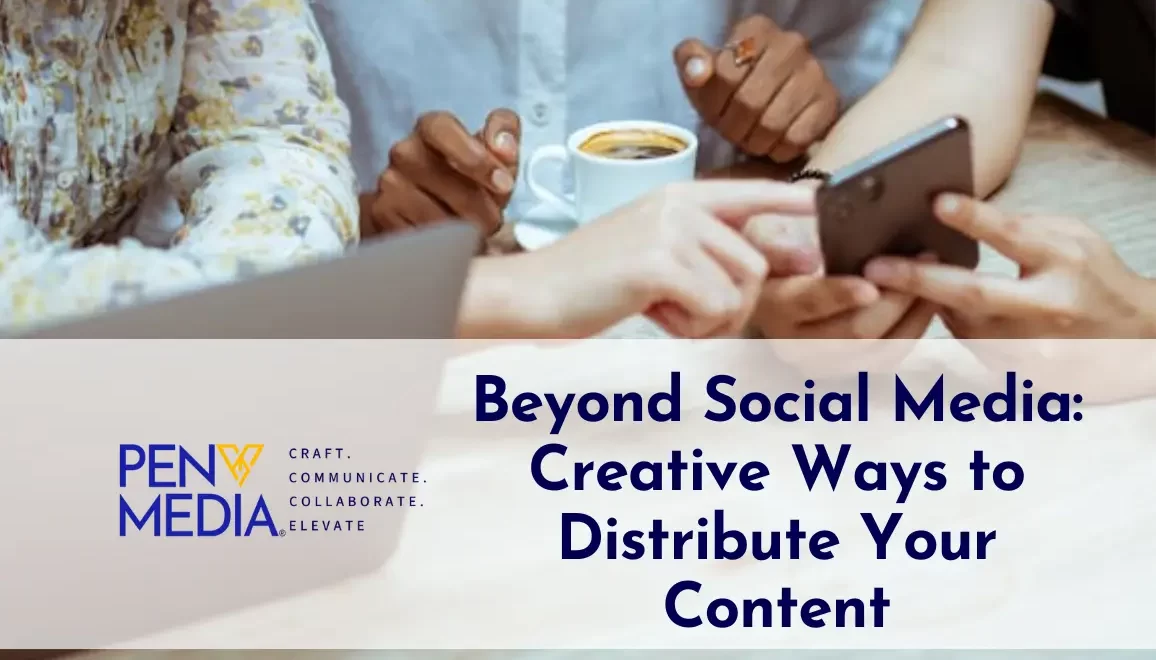In today’s digital age, creating high-quality content is only half the battle. The other half is ensuring that your content reaches your target audience effectively. Social media platforms are a powerful tool for content distribution. But they are not the only option. In this comprehensive guide, we will explore creative ways to share your content beyond social media.
Email Newsletters
Email newsletters are still one of the best ways to send content directly to your audience’s inbox. Social media uses algorithms to decide who sees your content. But, with email newsletters, you can reach your subscribers directly. To make the most of your email newsletter, focus on giving value to your subscribers. Do this with creative content, special offers, and personalized recommendations. Segment your email list by user preferences and behavior. This will ensure that your newsletters are relevant and engaging for each subscriber.
Email newsletters are an excellent platform for content compounding. Instead of just sharing your latest blog posts or updates, consider curating content from various sources. Then, package it into a themed newsletter. For example, you could make a weekly roundup of industry news, trends, and insights. Or, you could compile a list of your best blog posts from the month. You can add value to your subscribers by repackaging and repurposing existing content. This will also extend the lifespan of your content.
Collaborate with influencers
Teaming up with industry influencers can amplify your content’s reach and credibility. Find influencers whose audience matches your target. Reach out to them with collaboration offers. This could involve guest blogging. It could involve co-hosting webinars or podcasts. Or, it could involve collaborating on social media campaigns. You can use the influencer’s audience and credibility. Doing so will extend your content’s reach to new, engaged followers.
Influencer collaborations are an effective form of content compounding. You can make creative content with influencers. You can use their expertise, creativity, and audience. This makes content that resonates with your target audience. For example, you could invite an influencer to a live Q&A on your blog or podcast. They would share their insights and expertise on a relevant topic. You can reuse the content from the collaboration on many channels. These include social media, email newsletters, and your website. Doing this will maximize its impact and reach.
Compounding Creative Content
Repurposing content involves changing existing assets. This creates new formats. Then, it spreads them across many channels. Instead of making new content, repurpose your most popular or evergreen, creative content. Make it into formats like videos, podcasts, infographics, or slide decks. This lets you reach new audiences. They may prefer to consume content in different formats. It also extends the lifespan of your content.
For example, you could turn a blog post into a video, a podcast, or an infographic. Each offers a unique way to engage with your content. By promoting your reused content across many channels, you can reach new audiences. They may prefer different formats. Also, by combining your content, you can use existing assets to create new and engaging content for your audience. This will maximize the impact of your content distribution efforts.
Host virtual events
Virtual events are great opportunities. They let you share your content and engage with your audience in real time. These events include things like webinars, virtual summits, and online workshops. Choose timely topics. Promote your event through email, social media, and other channels. At the event, provide useful content, interact with attendees through live Q&A sessions and encourage them to take part and interact. Record the event. Put it on your website or YouTube for those who couldn’t attend live.
Hosting virtual events is a form of content compounding. It lets you leverage live interactions and engagement to create valuable content. You can repurpose and share it across various channels. For example, you could reuse the recording of a webinar. You could turn it into short video clips or podcast episodes. Then, you can share them on social media or include them in your email newsletter. You can extend the life of your virtual events by reusing their content. You can also reach new audiences who missed the live event.
Create interactive, creative content
Interactive and creative content is engaging and shareable. It is a great way to distribute your content and attract new audiences. Examples include quizzes, polls, and assessments. Create interactive content. It should fit your brand and speak to your audience’s interests and preferences. Promote your interactive content through social media, email newsletters, and digital ads. This will maximize its reach and impact.
Interactive content is an innovative kind of content compounding. It encourages active participation and engagement from your audience. Interactive content invites users to interact with your brand. They can also share their input instead of consuming your content. This creates a more immersive and personal experience. You can repurpose and share interactive content results across channels. This will extend your content’s reach and drive engagement with your brand.
Use SEO and content optimization
You must optimize your content for search engines (SEO). This is key to making it more visible and discoverable online. Do keyword research to find search terms related to your content. Then, use them in your titles, headings, and body. Optimize your meta tags, URLs, and image alt text to improve your content’s search engine ranking and click-through rates. Check your website’s performance. Use tools like Google Analytics and Search Console to find areas to improve and optimize.
SEO is a basic part of content compounding and creative content writing. It ensures your content keeps attracting organic traffic and engagement. Optimize your content for relevant keywords and search terms. This can boost its visibility in search results, driving ongoing traffic to your website or platform. Also, by tracking your website’s metrics, you can find chances to refine your content strategy. This will keep your content relevant and useful to your target audience.
Publish ebooks or whitepapers
Ebooks and whitepapers are valuable resources. They provide in-depth information on a specific topic or issue. Publish ebooks or whitepapers on topics relevant to your industry or audience. Offer them as downloads on your website or in email newsletters. Promote your ebooks or whitepapers through social media, guest blogging, and email. These efforts aim to attract new leads and subscribers.
Publishing ebooks or whitepapers is a form of content compounding and creative content writing. It lets you reuse existing content to make a thorough and trusted resource. This resource provides lasting value to your audience. Compile your best blog posts, articles, or research into an ebook or white paper. This will create a valuable asset that shows your expertise and leadership in your industry. Promote your ebooks or whitepapers across many channels. You can attract new leads and subscribers. They are interested in learning about your brand or industry.
Engage with online communities
Join online communities, forums, and groups related to your industry or niche. It’s a great way to share your content and establish yourself as an authority. Share your content in these communities. But, be careful not to spam or self-promote too much. Instead, focus on providing value, answering questions, and engaging in meaningful discussions. Over time, you’ll build trust and credibility in the community. This will lead to more visibility and engagement for your content.
Engaging with online communities is a form of content compounding. It lets you use community discussions to spread your content. They help you attract new audiences. Join in discussions. Share insights or resources. You can establish yourself as a trusted authority. You can also become a thought leader in your industry. Over time, the community may start to seek out your content. This will bring more traffic, engagement, and brand awareness.
Conclusion
Distributing your content beyond social media requires creativity, strategy, and persistence. You can reach new audiences and drive engagement across many channels. You can do this by using email newsletters, working with influencers, reusing and combining content, hosting virtual events, publishing ebooks or whitepapers and engaging with online communities.
Try different distribution channels and strategies to find what works best for your brand and audience. Remember to track your results and analyze your performance. Then, refine your approach over time to maximize the impact of your content efforts. Ready to take your content distribution to the next level? Partner with PenVmedia and unlock the full potential of your content. Contact us today to get started!



Leave a Comment